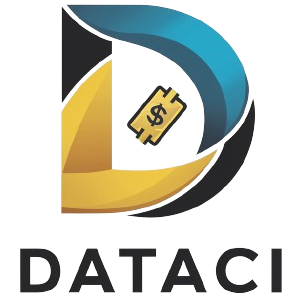Understanding the NS&I Withdrawal Process
National Savings and Investments (NS&I) offers a range of savings and investment products, including Premium Bonds, Income Bonds, Junior ISAs, Investment Accounts, and Savings Certificates. When the time comes to withdraw your funds from these accounts, it’s essential to understand the process and the factors that can affect the transfer time to your bank account.
The withdrawal process varies depending on the specific NS&I product you hold. Some accounts, such as Premium Bonds and Investment Accounts, require you to fill out a form if you don’t have an online profile. Others, like Income Bonds, have minimum withdrawal amounts and account balance requirements to keep the account open.
Withdrawal Methods for Different NS&I Products
Each NS&I product has its own withdrawal method and requirements. For example, to withdraw money from Premium Bonds without an online profile, you’ll need to fill out a form. Similarly, withdrawing from an Investment Account without an online profile also requires completing a form.
Income Bonds have a minimum withdrawal amount of £500, and you must maintain a balance of at least £500 to keep the account open. When it comes to Junior ISAs, the funds are automatically transferred to an adult cash ISA on the child’s 18th birthday.
Minimum Withdrawal Amounts and Account Balance Requirements
It’s important to be aware of the minimum withdrawal amounts and account balance requirements for your specific NS&I product. These requirements ensure that your account remains active and that you can continue to earn interest on your savings.
- Income Bonds: Minimum withdrawal of £500, and a minimum balance of £500 must be maintained to keep the account open.
- Junior ISAs: No minimum withdrawal amount, as funds are transferred to an adult cash ISA when the child turns 18.
- Investment Accounts: No specified minimum withdrawal amount.
Penalties and Interest Loss for Early Withdrawal
Some NS&I products, such as Savings Certificates, may impose penalties or result in a loss of interest if you withdraw your funds before the end of the fixed term. For example, cashing in Index-linked Savings Certificates before the end of the term will incur a penalty and loss of interest.
Fixed Interest Savings Certificates cashed before July 22, 2023, will also be subject to a penalty and loss of interest. It’s crucial to consider these potential consequences before making an early withdrawal from your NS&I account.
NS&I Transfer Timelines and Processing
The time it takes for your withdrawn funds to reach your bank account depends on several factors, including the type of NS&I account you hold, the withdrawal method you choose, and when you submit your withdrawal instructions.
Processing Times Based on Instruction Submission
The processing time for your withdrawal depends on when you submit your instructions to NS&I. If you provide your instructions before 13:00 on a banking day, your withdrawal will be processed the next banking day. However, if you submit your instructions after 13:00, the withdrawal will be processed the following banking day.
Keep in mind that if you submit your instructions on a weekend or bank holiday, the withdrawal will be processed on the next available banking day. This means that the transfer time to your bank account may be slightly longer in these cases.
Transfer Limits and Processing for Multiple Withdrawals
If you make multiple withdrawals on the same day, there is a £50,000 limit for further withdrawals. These additional withdrawals will follow the same processing timescales as the initial withdrawal.
Instructions given before 20:00 will be processed the same day, and the funds should reach your bank account two banking days later. Instructions submitted after 20:00 will be processed the following banking day.
Factors Affecting Transfer Time to Bank Account
Several factors can impact the time it takes for your withdrawn funds to reach your bank account:
- Processing times based on when you submit your withdrawal instructions (before or after 13:00 on a banking day, or on weekends/bank holidays)
- The specific NS&I product you are withdrawing from, as some may have different processing times
- The withdrawal method you choose (online, by phone, or by post)
- Your bank’s processing times for incoming transfers
It’s important to note that your NS&I account balance may not immediately reflect your new savings balance after making a deposit or withdrawal due to background processing. This is normal and should update within a reasonable timeframe.
NS&I Account Top-up and Transfer Requirements
When transferring money to your NS&I account, it’s essential to ensure that you provide the correct details to avoid any delays or issues with the transfer.
Identity and Address Verification for First-time Investors
If you are investing with NS&I for the first time, you may be required to provide identity and address verification before your account balance can be updated. This is a standard security measure to protect your funds and prevent fraudulent activity.
NS&I will notify you if they require any additional information or documentation to verify your identity and address. It’s crucial to respond promptly to these requests to avoid delays in processing your investment.
Providing Correct Details for Successful Bank Transfers
When setting up a bank transfer to your NS&I account, double-check that you have entered the correct account details. This includes your NS&I account number or holder’s number, which will be used as a reference for the transfer.
If you notice that you have made an error in your payment details, do not attempt to retry the payment, as this may result in a double charge to your bank account. Instead, contact NS&I for confirmation and assistance with resolving the issue.
Using NS&I Holder Number or Account Number as Reference
When making a bank transfer to your NS&I account, you’ll need to provide your holder’s number or account number as a reference. This ensures that the funds are correctly allocated to your account.
Your holder’s number can be found on your Bond record, certificate, or statement. The format of the holder’s number may vary depending on when your account was opened:
- Newer accounts: 9 or 10 digits
- Older accounts: 8 digits followed by a letter
If you’re unsure about your holder’s number or account number, contact NS&I for assistance to ensure a smooth transfer process.
Interest Calculation and Account Updates
The way interest is calculated and when your account is updated with new funds can vary depending on the payment method you use.
Interest Accrual for Card Payments and Bank Transfers
When you make a deposit using a debit card, NS&I will calculate interest from the day your card details are provided, and the payment is authorized. This means that even before NS&I receives the funds, your interest will start accruing.
However, for bank transfers, interest begins accruing from the day NS&I receives the money. This may result in a slight difference in the interest earned compared to card payments.
Delays in Account Balance Updates and Interest Calculation
In some cases, there may be delays in updating your NS&I account balance and calculating interest, especially for deposits made by debit card between the 20th and 5th of the month. These deposits may not show up in your account until the next banking day after the 5th due to the interest calculation process.
If you notice a delay in your account balance updating after making a deposit, don’t worry. This is a normal part of the process and should be resolved within a few banking days.
See also:
- How Much Interest Will I Earn on £50,000 in a Year UK – Best Rates and Calculations
- How Much Interest Will I Earn on £50,000 UK – Best Savings Calculator
- How Much Interest Will I Earn on £100,000 Per Month?
- How Much Interest Would 20 Million Earn UK – Calculator for Investing
- How Much Interest Will I Earn on £200,000 in the UK?

